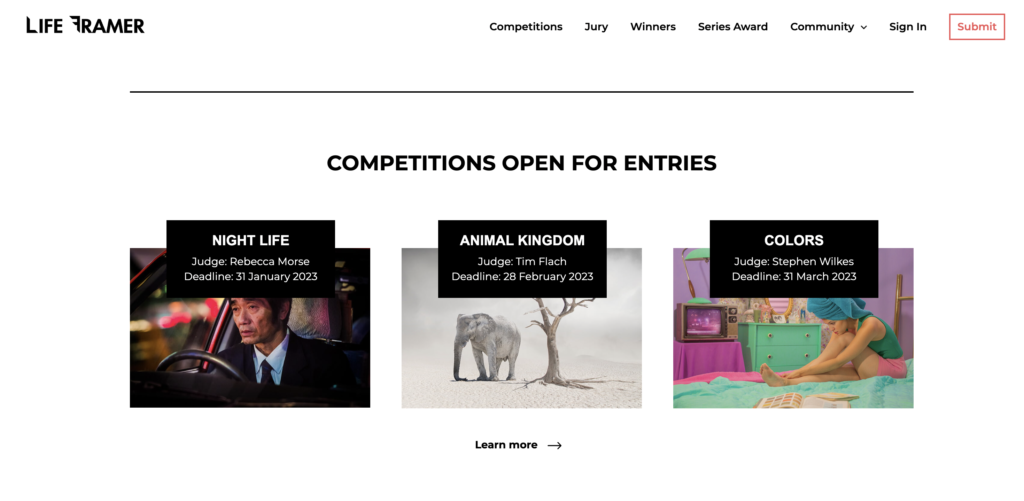Given time and devotion, stock photography can be financially rewarding. However, like many other elements of photography, it is laden with terms and acronyms that might seem quite alien to the newcomer. A quick look at the submission requirements of any stock photography site will soon reveal a veritable jungle of definitions and terminology.
So how do you know your RMs from your RFs? Have you filled out an MR or PR? How are your tags, if that’s not too personal a question?
Today we are going to teach you to think like a stock photography editor with some terms you need to know.
RM/RF – You Have To Decide.
RM stands for Rights Managed. RF for Royalty Free. These two terms describe the license that your image will be sold under. The vast majority of agencies today are what are known as Microstock. They predominantly use the Royalty Free License.
Royalty Free is a license that allows the purchaser to use the image as they wish and for as many times as they like. They could use it to illustrate a website but also on the packaging of a product without the need to re-license. There are some caveats that we will come to later, but for the most part, RF is the most common license today.
RM stands for Rights Managed and is a more traditional license and more the preserve of higher end “Macro stock” agencies. Rights Managed means that when you purchase a license, it is for a specific use and one time only. For example, you might license the image to use in a newspaper, but you would need to re-license to use it in a calendar. Rights Managed often fetches higher prices but is a rapidly diminishing part of the stock ecosphere.

A stock editor will expect you to know both of these terms and apply them to your images on submission. If for reasons listed below, they cannot be licensed under the one you picked, a stock editor may well reject that submission.
Editorial And Commercial
Your stock editor will expect you to know the difference between an Editorial and Commercial image. A Commercial image is one that can be used to sell a product or a service. It may be a quaint English village on a tin of toffees or a good looking person in a cosmetics advert. An Editorial image is one that can be used to illustrate news and documentary media. For example, an image of St Pauls Cathedral in a travel magazine.

There are some critical considerations to make when deciding between the two. A commercial image will generally fetch a higher rate than an editorial one. However, any people, trademarks, artworks or even some buildings will need a release before it can be used.
Taking our quaint English village scene, if there are one or more identifiable persons in the shot, you will need a Model Release for each one to be able to use the shot commercially. If you do not have this, you will have to submit it as an editorial shot.
Editorial and Commercial can be a minefield and stock editors can also be inconsistent in what they accept. This is particularly the case with property and art. An editor may well reject a statue or building simply because they don’t know whether it is copyright protected. You may have to research online the copyright and trademark status of potential issues within a shot if you wish to get it accepted as commercial.
Model and Property Release.
To sell your images on a commercial basis, you are going to need to get model and property releases. A model release will be required for each identifiable person in the shot, with any minors needing to have a guardian sign for them. Again stock editors can be inconsistent with the term identifiable with some requiring releases even if a person is small in the frame and has their back to camera.

A property release is required for some buildings, artworks, and trademarks. It can be tricky to determine what needs a release and what doesn’t and even editors can be quite vague. In one of my recent uploads, the Victoria Memorial in London was rejected as needing a property release despite the sculptor having died nearly 100 years ago. In reality, it’s unlikely that this monument needs a release, but the editor was erring on the side of caution.

Metadata
The metadata that you add to an image is a vital part of getting your image discovered. There are three terms which you are going to need to know namely Title, Description and Tags. Depending on the agency, these might have slightly different names. Let’s look at each.
- Title: A concise description of the scene in a few words. Example: London bus crossing Tower Bridge.
- Description: A longer, more informational paragraph. Example: A red double deck London bus crosses Tower Bridge at dawn in spring.
- Tags: Also known as keywords, a series of up to 50 words and phrases that describe the physical and emotional context of your image.
Another term you need to be aware of is Keyword Spamming. This can take two forms, the first where a person deliberately uses the same word multiple times to raise the images profile. The second is where someone copies wholesale the keywords of a similar image by another contributor. Both are likely to lead to serious consequences from the editor.

Categories.
Another term your stock editor will expect you to know is the category the image will fall under. This is effectively the genre of the shot and can vary from agency to agency. Some agencies only require one category, other up to three. It’s essential to make sure your submissions are put into the right categories as this will enhance your chances of sales.
Stock photography is a useful way to supplement you living but to be successful; you will need to know the terms listed above. If you are having images rejected, it is most probably due to one of the above not being adhered to. Things like property release can be quite difficult and not every editor will get it right when rejecting. If you think they are wrong, you can resubmit with a note explaining why.
By knowing and understanding the above terms, you will stand a much better chance of passing submissions first time and going on to make some money.




